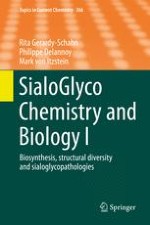2015 | OriginalPaper | Chapter
Natural Antibodies Against Sialoglycans
Authors : Nadezhda Shilova, Margaret E. Huflejt, Marko Vuskovic, Polina Obukhova, Maksim Navakouski, Nailya Khasbiullina, Galina Pazynina, Oxana Galanina, Alexey Bazhenov, Nicolai Bovin
Published in: SialoGlyco Chemistry and Biology I
Publisher: Springer Berlin Heidelberg
Activate our intelligent search to find suitable subject content or patents.
Select sections of text to find matching patents with Artificial Intelligence. powered by
Select sections of text to find additional relevant content using AI-assisted search. powered by
